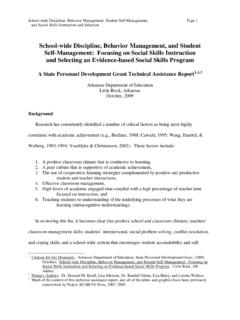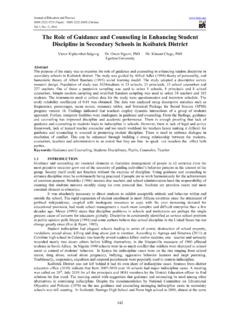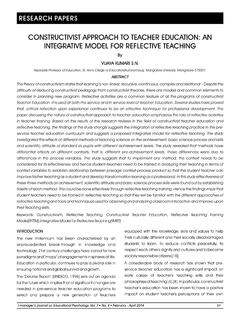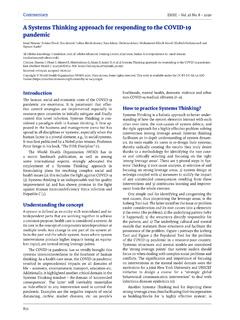Transcription of Organizational Change Management Framework - California
1 State of CaliforniaOrganizational Change ManagementFrameworkPage iiContentsCalifornia Department of TechnologyOrganizational Change Management FrameworkOverview3 Overview of the CA-OCM8 Framework Conventions and Structure14 Alignment to Other Frameworks16 OCM Knowledge AreasTemplates3 Approach8 CA-OCM TemplatesConcept3 Approach7 Knowledge Areas19 Process Phase ChecklistPage iiiCalifornia Department of TechnologyOrganizational Change Management FrameworkContentsInitiating3 Approach7 Knowledge Areas30 Process Phase ChecklistPlanning3 Approach9 Knowledge Areas41 Process Phase ChecklistExecuting3 Approach9 Knowledge Areas53 Process Phase ChecklistPage ivCalifornia Department of TechnologyOrganizational Change Management FrameworkContentsClosing3 Approach8 Knowledge Areas27 Process Phase ChecklistAdditional Resources3 Approach11 Framework Resources14 GlossaryPage vCalifornia Department of
2 TechnologyOrganizational Change Management FrameworkDocument ControlVersion HistoryDocument history and version control is used to record detail of minor and major changes to the California Organizational Change Management Framework (CA-OCM).Version # PublicationCalifornia Department of TechnologyOrganizational Change Management FrameworkOverview | Page 1 OverviewThis chapter provides an overview of the California Organizational Change Management Framework (CA-OCM), its purpose and use, and how it will help you with your Department of TechnologyOrganizational Change Management FrameworkOverview | Page 2In this of the CA-OCM FrameworkPage Purpose and Use of the The Value of the CA-OCM A Thoughtful Approach to OCM2 Framework Conventions and StructurePage Colors and Icon Key Navigation Call-Out Boxes3 Alignment to Other Frameworks Page Related Frameworks4 OCM Knowledge Areas Page Purpose of Knowledge OCM Knowledge AreasCalifornia Department of TechnologyOrganizational Change Management FrameworkOverview | Page 3 OverviewOverview of the CA-OCM
3 FrameworkOrganizational Change Management (OCM) is a discipline that helps organizations implement Change to achieve measurable results in their business strategies, work processes, structures, technologies, Organizational cultures, and Management styles. These changes can be driven by implementation of a new mandate, process, technology, or strategy. OCM focuses on the people in the organization and on identifying and enhancing the human factors that will achieve and sustain desired project results, which can include improved efficiency, quality, timeliness, and cost California Project Management Office (CA-PMO) has developed the California Organizational Change Management Framework (CA-OCM or OCM Framework ) to provide an OCM Practitioner with a practical guide for managing Change within an organization.
4 The CA-OCM provides guidance on OCM methods and approaches through the use of resources, tools, and templates, as well as narrative describing when and how specific OCM activities should be performed throughout the Project Management Lifecycle (PMLC).While the CA-OCM is written in the context of information technology (IT) implementation efforts, it is applicable to any type of project that requires an organization, its groups, and its people to Change . This must be done with a thoughtful approach that leverages best practices and lessons learned to help navigate California s unique environment and characteristics.
5 The OCM Framework aligns to and can be used with the California Project Management Framework (CA-PMF) and the California Business Process Reengineering Framework (CA-BPR or BPR Framework ). Purpose and Use of the CA-OCMThe CA-OCM is designed to assist organizations in managing the people-side of Change in order to achieve business outcomes associated with that Change . OCM facilitates the transition of individuals, teams, and organizations to a future state to achieve business benefits. To accomplish this, OCM takes into California Department of TechnologyOrganizational Change Management FrameworkOverview | Page 4 Overviewconsideration the complete organization and how the organization and people need to Change .
6 The CA-OCM provides a set of activities that: Address the people issues that arise when an organization tries to make changes Facilitate communication to increase awareness and ownership Identify and promote leadership support Foster strong and healthy working relationships between project teams, the Project Sponsor, and Stakeholders Mobilize commitment of Stakeholders to implement a Change initiative Proactively identify and address resistance to Change Create a thoughtful training approach to provide opportunities for end users to gain knowledge and skills in order to succeed in the future CA-OCM is a practical and useful guide to assist an OCM Practitioner in implementing OCM efforts for projects of all sizes and complexity levels.
7 The CA-OCM provides recommended practices, activities, and tools/templates for OCM efforts, in addition to leveraging industry standards and intended audience for the CA-OCM includes Practitioners responsible for performing or managing OCM activities, roles that may be held by state and/or contractor resources, and other team members that may be involved in an OCM effort. The CA-OCM also provides helpful information to the Project Sponsor, project participants, and Stakeholders regarding OCM concepts and best practices. The OCM Practitioner should leverage the tools/templates, as applicable, and modify them to fit specific project in California vary in size, type, and complexity; however, despite these differences, the objectives of OCM remain consistent.
8 To account for an organization s specific project needs, the OCM approach and methods used will need to be tailored to the specific organization and project. The OCM Practitioner should adjust the level of complexity and rigor to match the needs of each individual project, and recognize that the level of complexity and rigor will differ from project to project. The CA-OCM provides guidance and adaptability to account for these project Department of TechnologyOrganizational Change Management FrameworkOverview | Page The Value of the CA-OCMThe CA-OCM provides a common foundation for state organizations to leverage and apply to project implementation efforts, to strive for a level of efficiency and consistency in OCM practices across the state.
9 The many benefits include:1. A guide for OCM Practitioners across a range of experience levels, using practical language and concepts that are easy to understand and An OCM Framework , nomenclature, and toolset with templates, examples, and instructions that can be customized to account for differences in project needs, but are structured to be consistently applicable across a wide range of project types, sizes, and Guidance based on industry standards, best practices, and lessons A statewide OCM perspective which addresses the relationships between OCM activities, project Management activities, BPR activities, Project Approval Lifecycle (PAL)
10 Activities, and system development A Thoughtful Approach to OCMThe CA-OCM offers a set of tools and techniques to provide a structured, disciplined, and repeatable approach to OCM. Though a set of tools and techniques can increase the likelihood of success, OCM also requires the appropriate skills and experience to apply them. The ultimate success of an OCM effort depends on the knowledge, skills, and abilities of the OCM OCM Practitioner needs to be able to proactively identify Change -related issues and to anticipate and plan for such challenges, mitigate issues as they arise, and work cohesively and effectively with a wide range of individuals.







